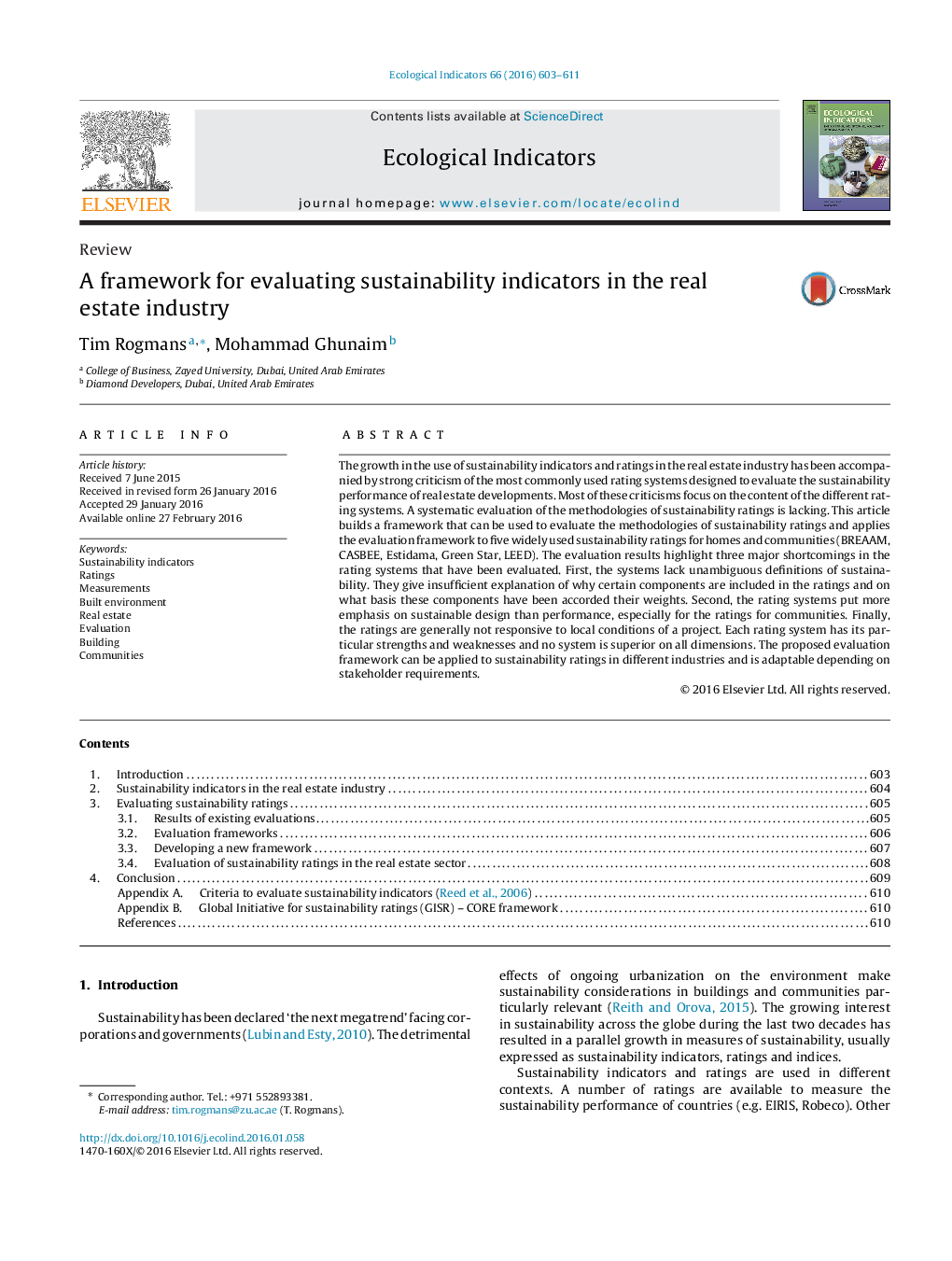| کد مقاله | کد نشریه | سال انتشار | مقاله انگلیسی | نسخه تمام متن |
|---|---|---|---|---|
| 6293557 | 1617136 | 2016 | 9 صفحه PDF | دانلود رایگان |

- A new framework is proposed to evaluate sustainability indicators in the real estate industry.
- The framework is applied to five leading sustainability rating systems.
- Evaluation results highlight important shortcomings of existing rating systems.
- There is not one rating system that is superior to others on all dimensions of the framework.
The growth in the use of sustainability indicators and ratings in the real estate industry has been accompanied by strong criticism of the most commonly used rating systems designed to evaluate the sustainability performance of real estate developments. Most of these criticisms focus on the content of the different rating systems. A systematic evaluation of the methodologies of sustainability ratings is lacking. This article builds a framework that can be used to evaluate the methodologies of sustainability ratings and applies the evaluation framework to five widely used sustainability ratings for homes and communities (BREAAM, CASBEE, Estidama, Green Star, LEED). The evaluation results highlight three major shortcomings in the rating systems that have been evaluated. First, the systems lack unambiguous definitions of sustainability. They give insufficient explanation of why certain components are included in the ratings and on what basis these components have been accorded their weights. Second, the rating systems put more emphasis on sustainable design than performance, especially for the ratings for communities. Finally, the ratings are generally not responsive to local conditions of a project. Each rating system has its particular strengths and weaknesses and no system is superior on all dimensions. The proposed evaluation framework can be applied to sustainability ratings in different industries and is adaptable depending on stakeholder requirements.
Journal: Ecological Indicators - Volume 66, July 2016, Pages 603-611